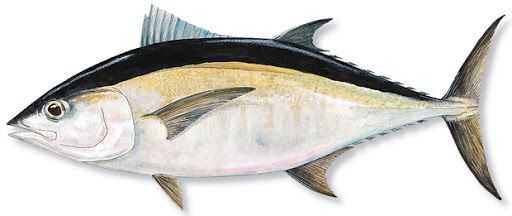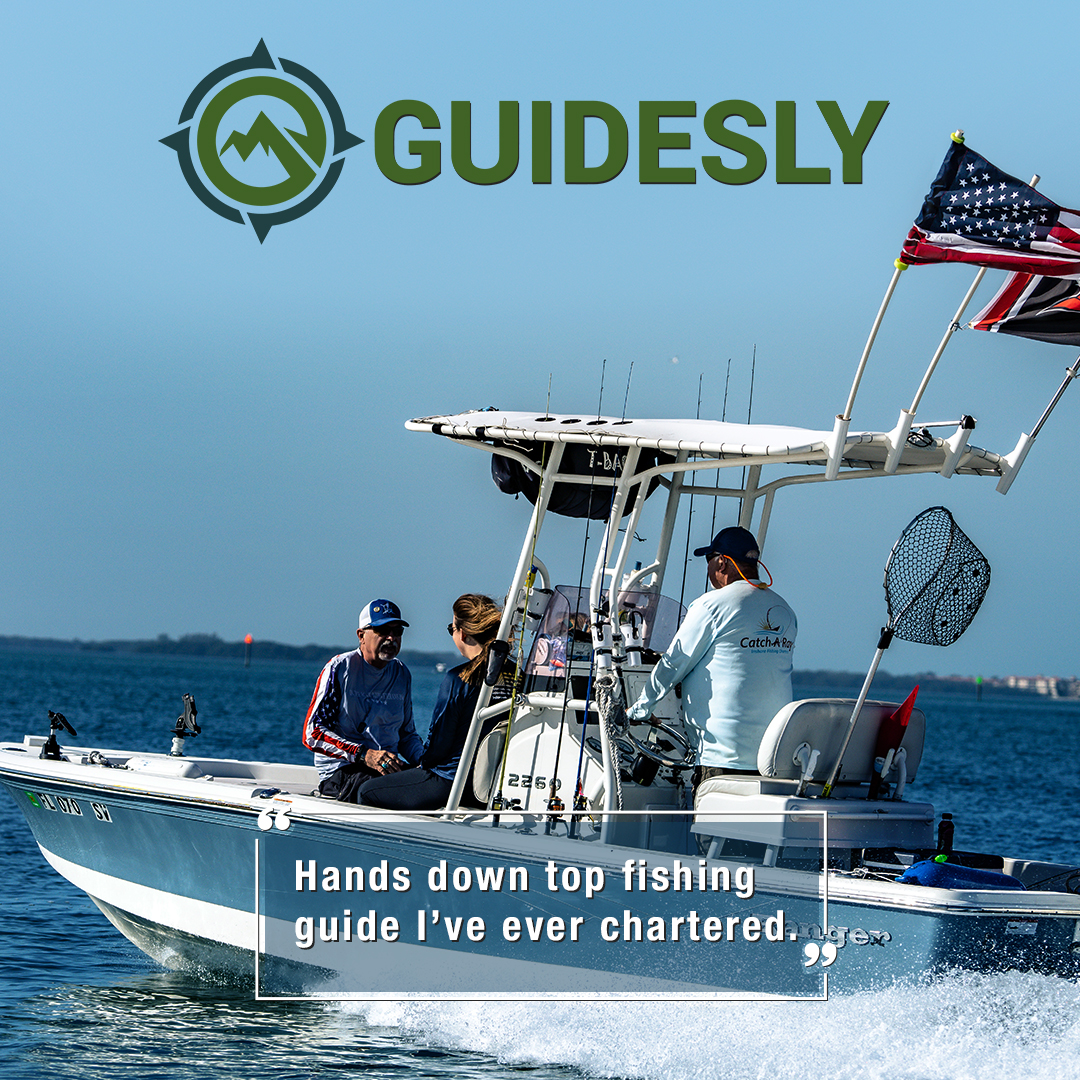Bluefin Tuna

Species Details
Thunnus Thynnus
Scombridae
Perciformes
Offshore
200 - 600 lbs.
78" - 180"
Bluefin Tuna (Thunnus Thhynnus) Description
The Atlantic Bluefin Tuna is one of the largest, fastest, and most fantastically colored fishes. They are shiny blue on the top, shimmery silver/white on the bottom, and reddish rear fins. They can be easily distinguished from other tuna species because of their smaller pectoral fins. They have a pineal window on its head that helps them navigate a wide range of areas. This large fish has a streamlined, torpedo-shaped body that is built for speed and endurance.
Size
Atlantic Bluefin Tuna is the largest of its tuna family. Their average size is 6.5 feet in length and 550 pounds, although they can reach twice that size in both weight and length, a whopping 12 feet and 1400 pounds. The Pacific Bluefin Tuna is smaller, with its average size of 5 feet and 130 pounds.
Interesting Facts
Bluefin Tuna meat is regarded as the most delicious, particularly among sashimi eaters. Their demand and prices have soared over the last 30 years worldwide, especially in Japan. Commercial operations have found new ways to catch them causing overfishing causing the Bluefin Tuna population to plummet. There are international conservation efforts to save them, but illegal fishing in Europe is endangering this species.
The Bluefin Tuna hunts fish such as mackerel and herring. They also enjoy invertebrates like crustaceans and squid along with kelp and zooplankton. Their average speed is 43 mph, and they can dive as deep as 3,300 ft. Sharks and whales are occasional predators of young Bluefin Tuna.
Spawning
Atlantic Bluefin spawn in the Gulf of Mexico and spawning starts in April and ends in June. Up to ten million eggs are laid, and eggs hatch within 48 hours. They have broadcast spawning habits, which means a few males and females at the same time in the same water release sperms and eggs. This ensures maximum fertilization of eggs.
Habitat and Distribution

Bluefin Tuna is native to both the eastern Atlantic and the western Atlantic Ocean. These large fish are a highly migratory species found from New Foundland to the Gulf of Mexico. They are also native to the Mediterranean Sea and were populated in the Black Sea until they were fished to extinction. As they are a rare warm-blooded fish, they comfortably live in cold and tropical water.
Baits and Lures
If trolling for Bluefin, we suggest using small fish natural bait of herring as your first choice. Squid, mackerel, mullet, or whiting can also be used. If using a line, chumming will attract the tuna and use lures of cedar plugs, spoons, feathers, and poppers. Also helpful to use colors of blue or bone, black or silver.
Fishing Techniques - How to Catch Bluefin Tuna
These are strong fish and tough fighters. Be prepared for fast surface runs and deep dives. You will need the heaviest of tackles and a sturdy fishing belt. Some of the most effective techniques include using live bait, trolling with lures, and jigging. Live bait such as squid or mackerel will entice the bluefin tuna to bite, while trolling with lures can mimic the movement of their natural prey. Jigging involves dropping a lure to the bottom of the ocean and quickly reeling it back up, which can trigger the predatory instincts of bluefin tuna. Trolling is the way to find the school Bluefins as it lets you search and cover large areas. Use of outriggers and your tackle should consist of snap swivels so that anglers can swap the rigs easily. Note, they usually bite more aggressively during the evening and morning hours. Locate them near offshore islands, reefs, or deep-feeding areas.
Jigging and chunking are two of the most effective and widely-used techniques for catching bluefin tuna. With the ability to target specific depths and locations in the water column, anglers can increase their chances of success in catching these prized fish. However, it is important to note that these techniques require a certain level of skill and experience to execute properly. Furthermore, it is crucial to practice responsible fishing practices to ensure the sustainability of the bluefin tuna population. When implemented responsibly, these techniques can result in thrilling and rewarding experiences for anglers looking to catch the fish of a lifetime.
Is Bluefin Tuna Good to Eat?
Bluefin tuna has a succulent, fatty flavor that is best enjoyed in its purest form when served raw or lightly seared. This exquisite fish has a naturally delicious Umami taste that can be compromised with marinades or sauces. Bluefin sushi is the perfect way to savor the rich and buttery flavor of this fish. When crafting bluefin sushi, only the highest quality cuts are selected and carefully prepared to enhance their natural taste. Whether enjoyed as sashimi or in a maki roll, bluefin tuna is a delicacy that should be savored in all its unadulterated glory. Its melt-in-your-mouth texture and sweet, delicate flavor make it a favorite of sushi lovers worldwide. So next time you order bluefin tuna, consider opting for it raw or lightly seared to fully appreciate its natural taste.
Bluefin tuna is a type of fish that is considered a delicacy in many parts of the world for its rich and flavorful taste. However, the global population of Bluefin tuna has declined drastically in the past few decades due to overfishing and other environmental factors. This has made it difficult to sustainably harvest this fish, and has also led to concerns about the impact of Bluefin tuna consumption on the environment. Achieving sustainable bluefin tuna conservation means implementing strategies to ensure that bluefin tuna populations will continue to thrive and supply communities with a healthy and delicious source of food. This involves carefully monitoring fishing efforts and adopting fishing methods that minimize harm to the environment and other marine species. There is also a need for strict regulations and policies to prevent overexploitation of bluefin tuna populations. Despite these concerns, many people still enjoy eating Bluefin tuna for its delicious taste, and continue to seek out this fish as a special treat. While it is important to be mindful of the impact of our food choices on the environment, there is no denying that Bluefin tuna is a tasty and sought-after food that many people enjoy.
Regulations
The species is federally managed and requires obtaining a permit and reporting your catch NOAA Fisheries has put in place regulatory measures put in place to manage bluefin tuna bycatch in the pelagic longline fishery for Atlantic highly migratory species.







